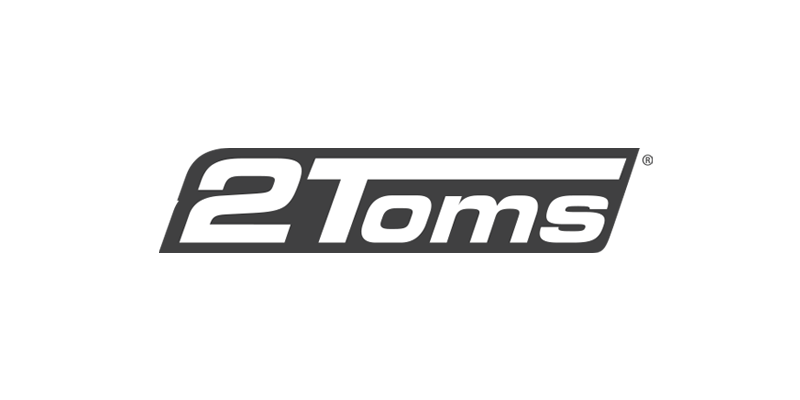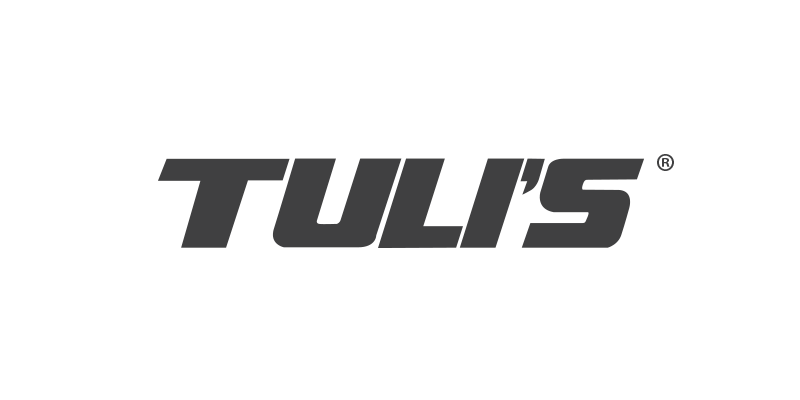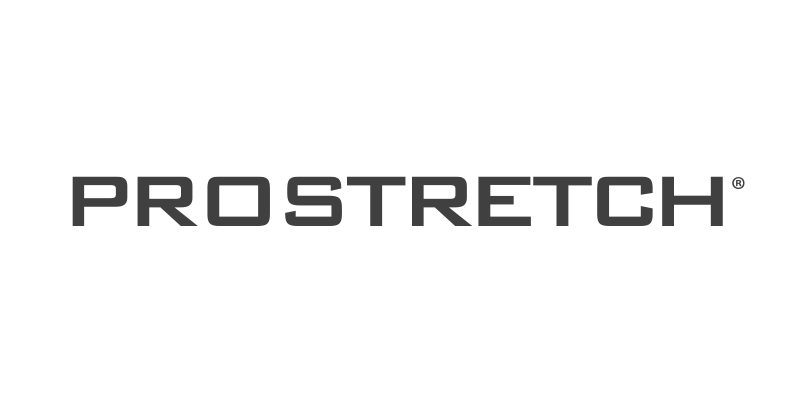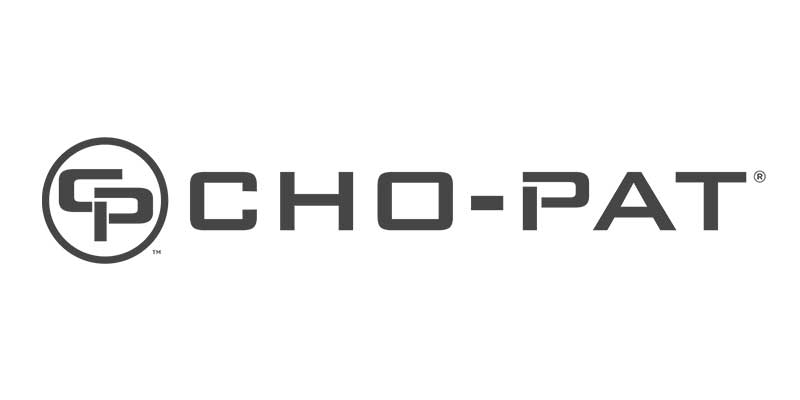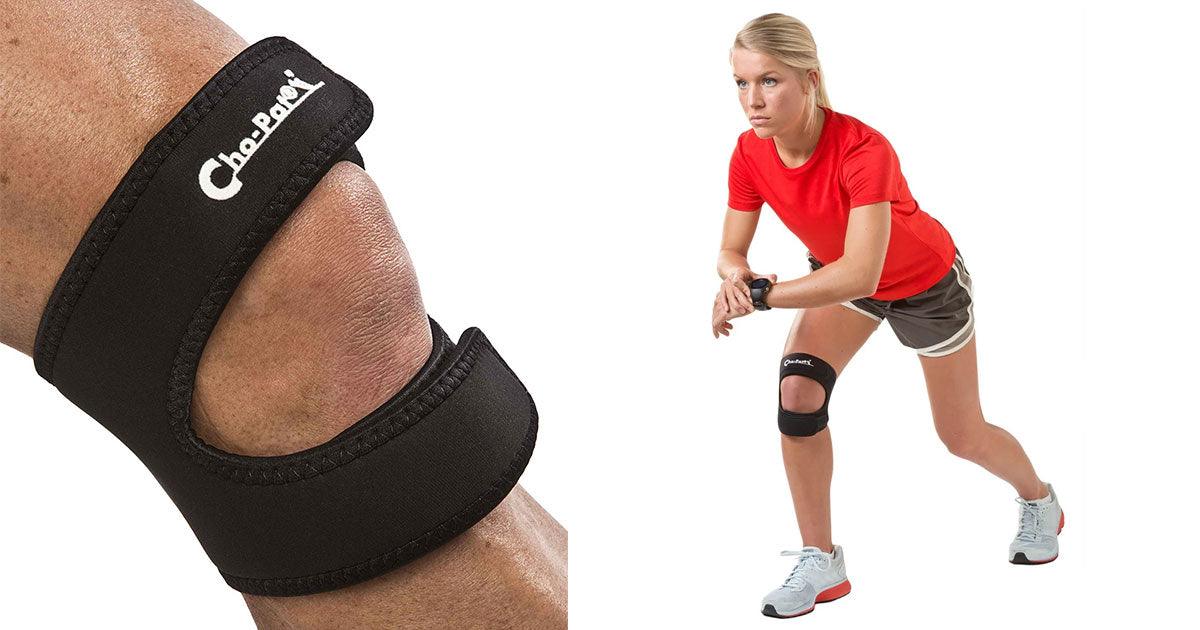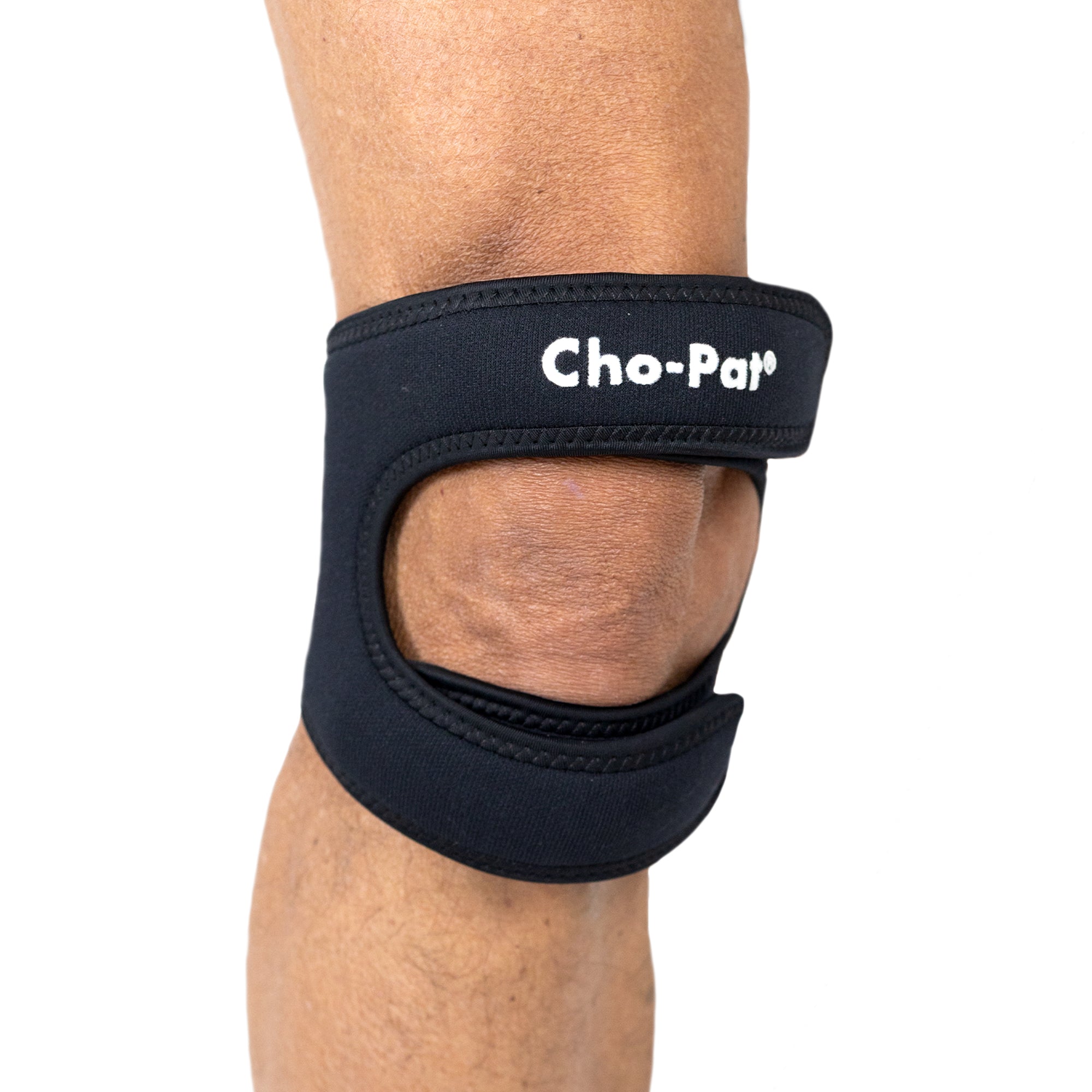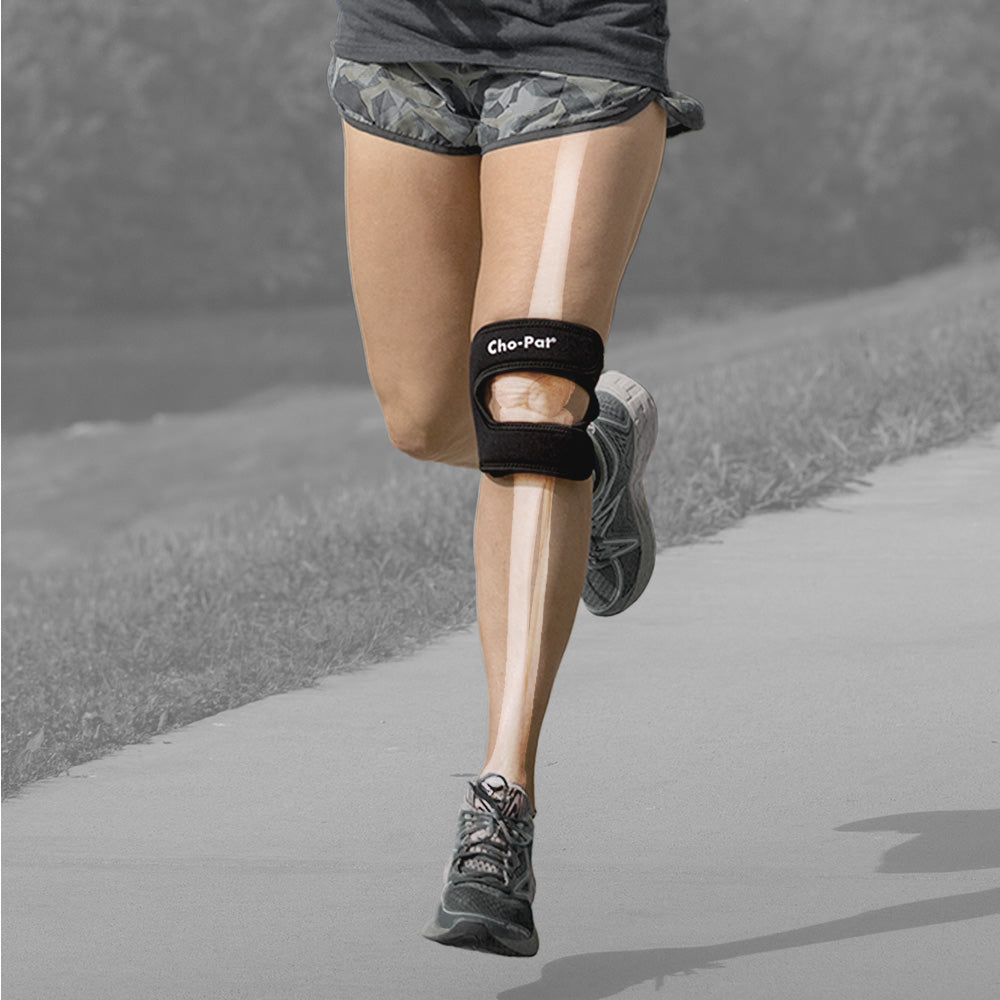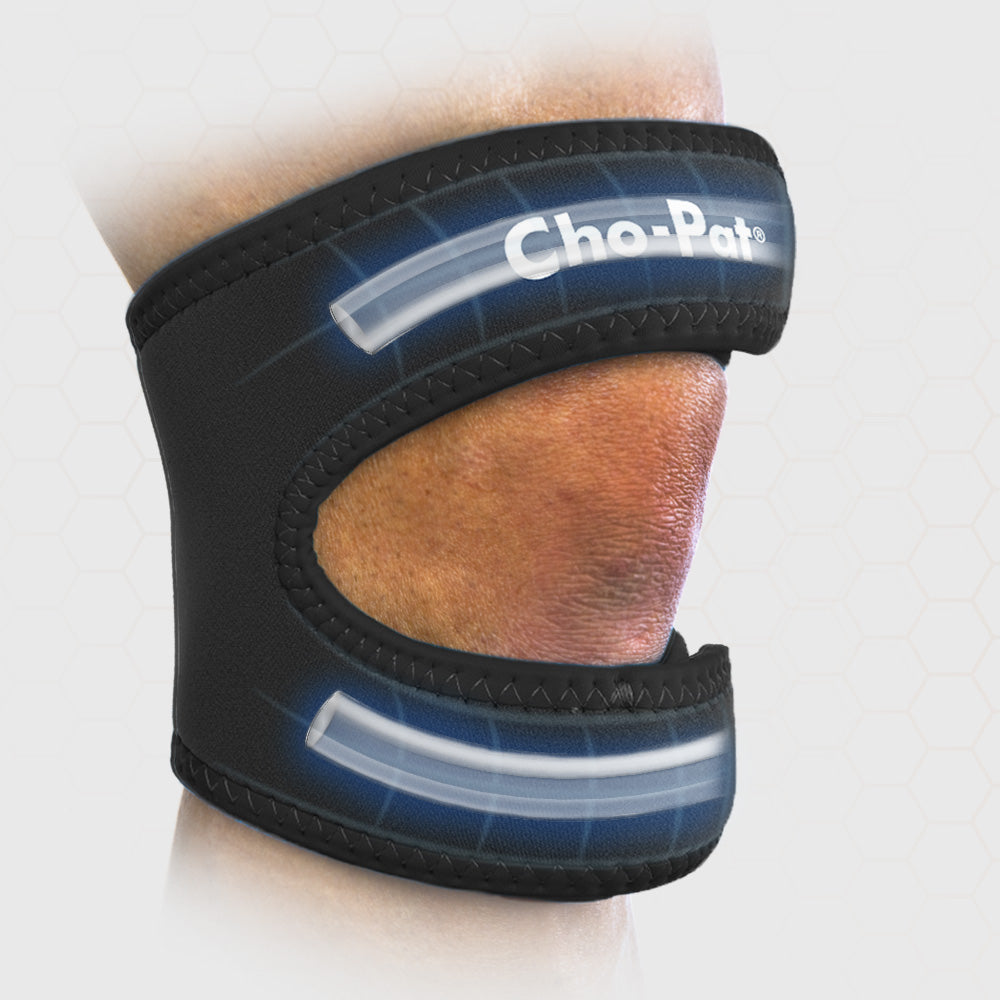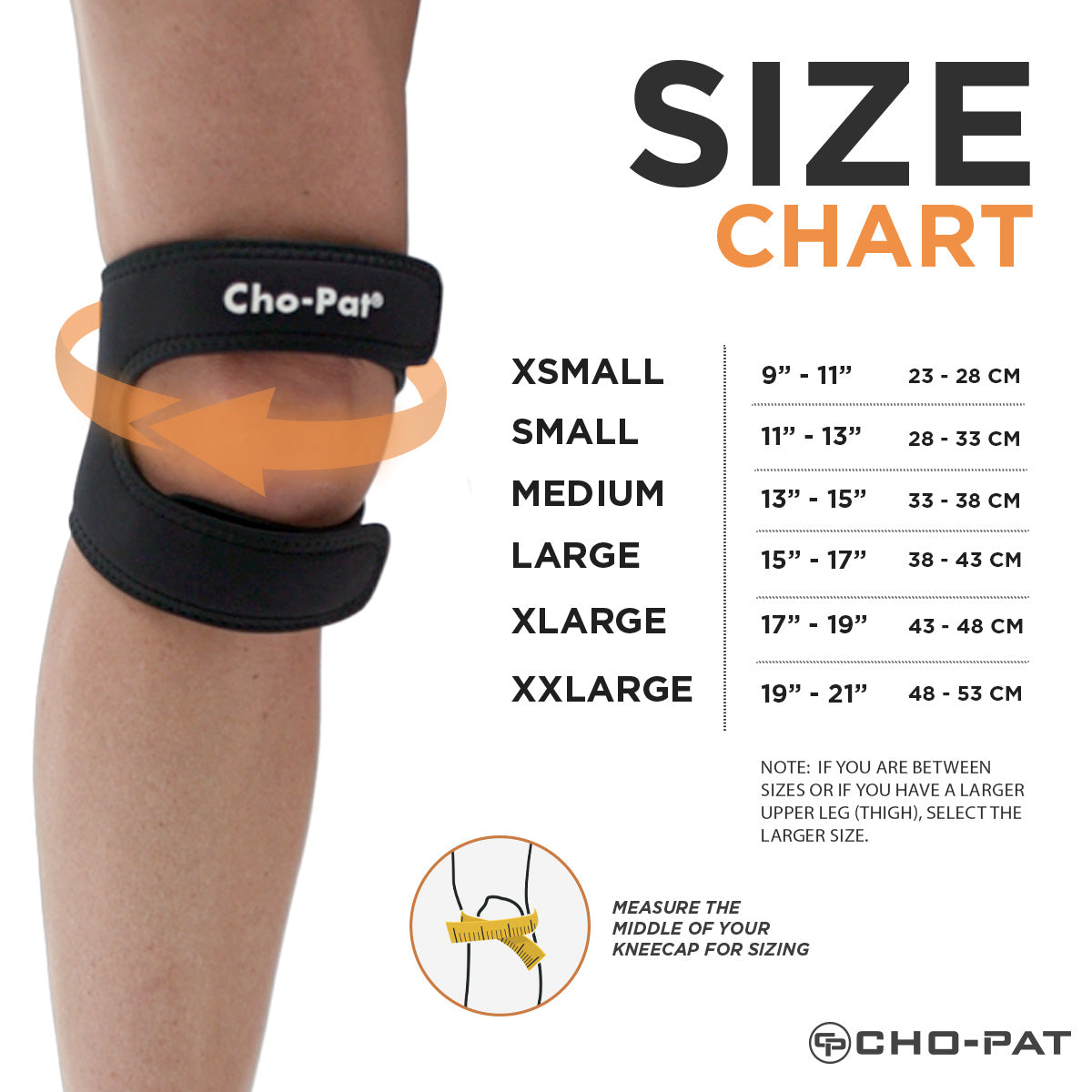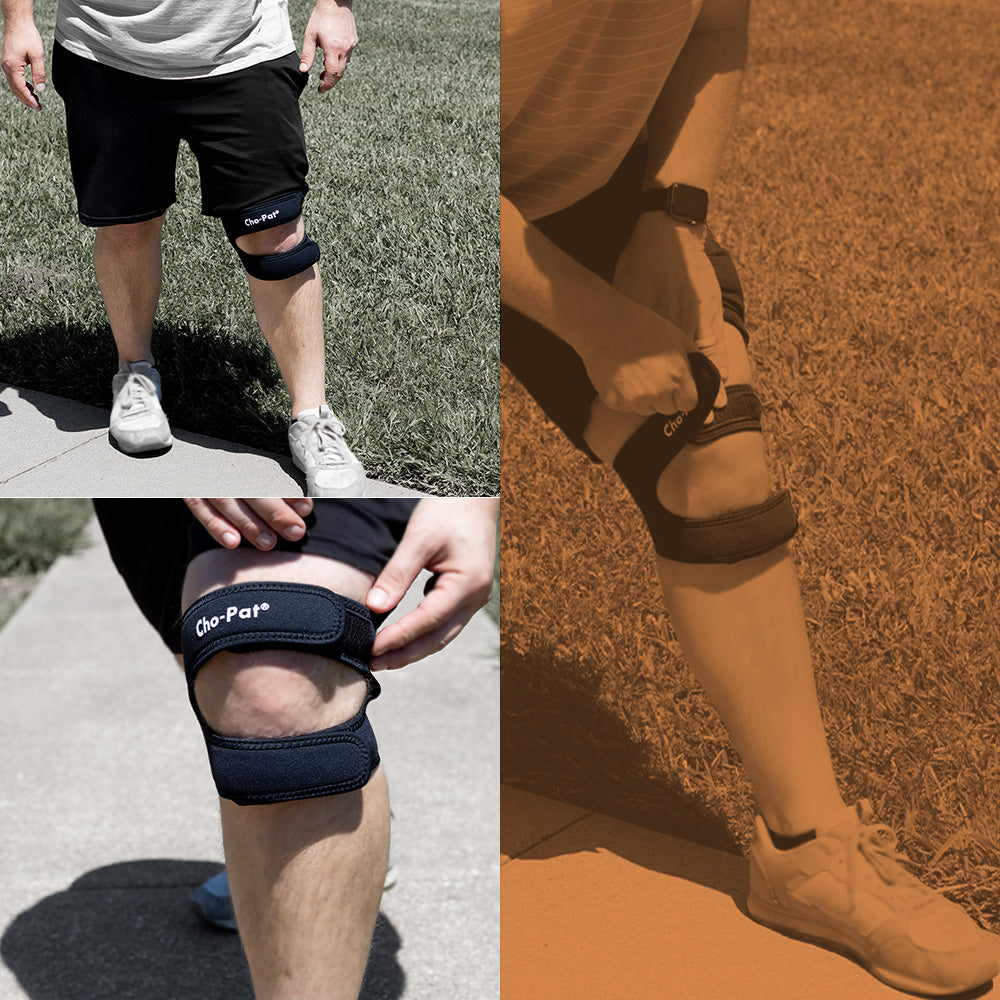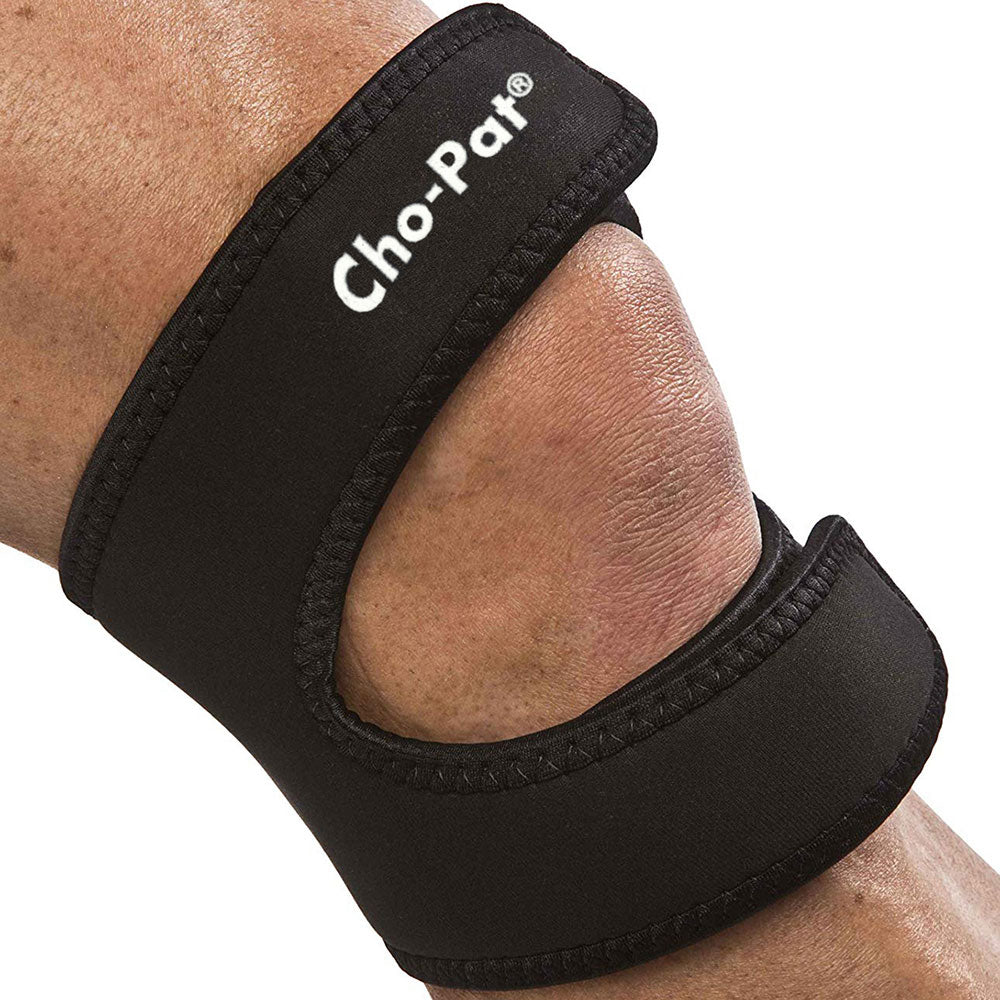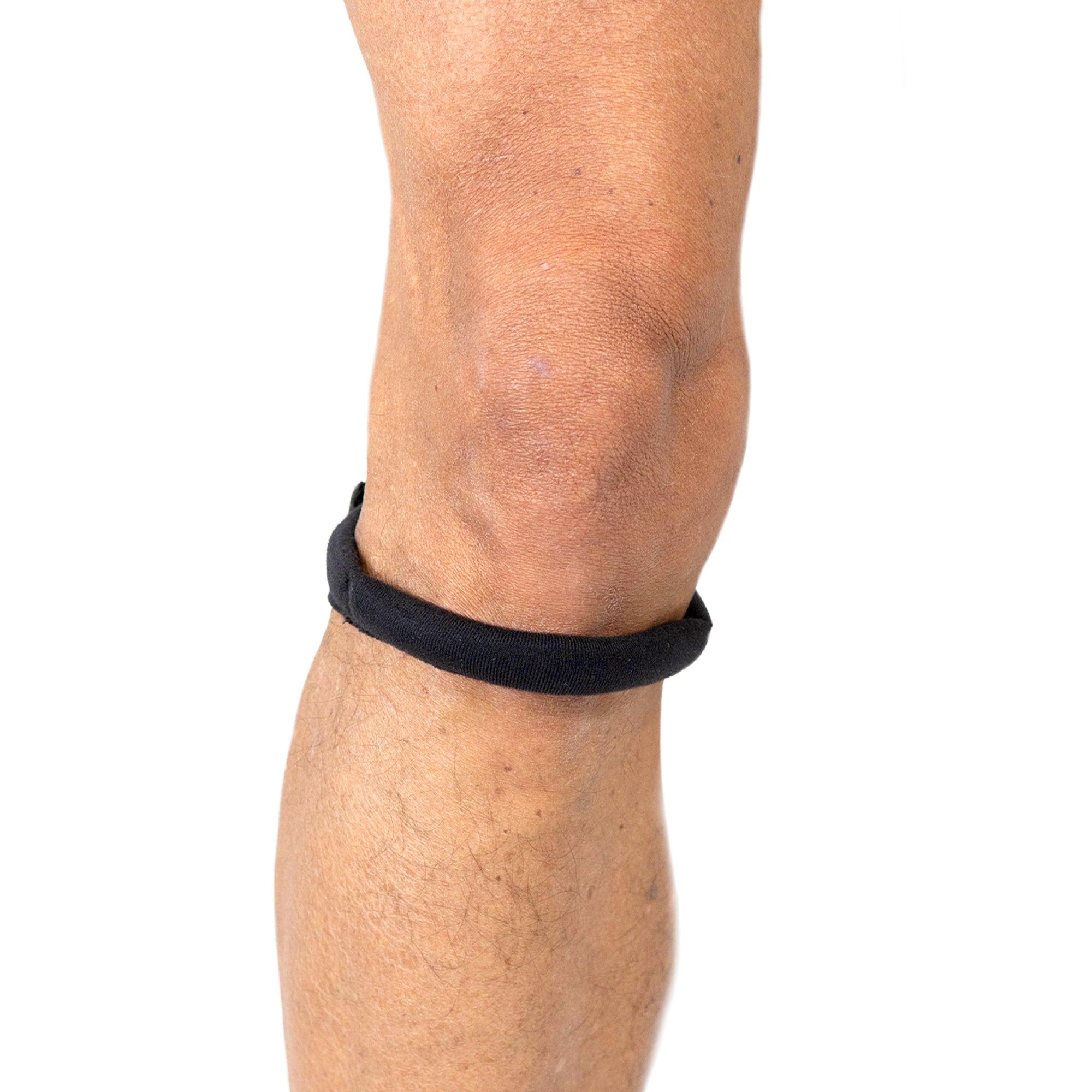Training hurts sometimes. We get sore, we feel aches, and sometimes we get injured. And with so many online running plans for beginners out there, it can be difficult to discern between lower quad soreness, knee pain that will go away, and a knee injury that needs specific treatment.
When trying to figure that out, braces are a great option. Knee braces add compression and help to relieve pressure. Knee braces make training bearable until the pain goes away, or until you can get the treatment you need.
But not all knee braces are created equal. In this article, we’ve got a few tips on treating knee pain in general, and then we’re diving into which knee brace to use when.
- Have An Exit Strategy
- Talk To Your Doctor
- Knee Strap
- Knee Sleeve
- Patellar Tracking
- Wraparound Brace
- Hinged Knee Brace
Have An Exit Strategy
Injuries happen, and aches and pains come and go. Having said that, it’s important to have an exit strategy in mind. Braces reduce pain, but they are not an adequate substitute for physical therapy, proper rehabilitation, and strengthening to recover from your running injury.
In addition, take an honest look at your run form, your mobility habits, and your strength training routine to get back on track and to prevent future injuries.
Chances are improving one, two, or all of those areas of your training will allow you to use your knee brace on an as-needed basis. In general, improving these areas will teach you how to avoid running injuries, so that pain is an abnormality in your training.
Specifically, research suggests that knee pain is often a result of weakness in the hips. For example, hip weakness often causes runners to sit in their hips. In turn, this can cause your knees to fall inward when you run. This motion can tug at ligaments in the knee and cause pain.
Strengthening your glutes will allow your pelvis to remain more stable so that nothing is moving side-to-side while you run.
This is a prime example of how strength training and run form can combine to prevent or reduce knee pain.
If injuries or pains come into play, the brace is there to offer support and comfort so that you can stay on track with your running training. Ideally, however, you are able to run pain-free without a brace.
Talk To Your Doctor
If you have been seeing a doctor for your pain or injury, he or she should be your first resource in deciding which knee brace to wear while running. And even before that inquiry, be sure that you are cleared to run in the first place. If you are cleared to run and a brace is recommended, doctors will likely recommend a specific brace given your particular injury.
While there is no requirement that you buy that specific brace from your doctor, follow the doctor’s recommendation when you go look for a brace.
By that same token, if you are not seeing a doctor but think a brace would help ease your knee pain, paying one visit to a doctor to get a recommendation is not a bad idea.
For example, do you need targeted support, overall compression, or both? The main takeaway here is to do your research before you go brace-shopping. Know what problem you are trying to solve and remember that not all braces can solve all problems.
Knee Strap
A knee strap is, visually, the most minimal knee brace a runner can wear. It is a small cushioned strap that’s worn around or just below the kneecap.
Knee straps are most often used to help with patellar tendonitis or “Runner’s Knee” pain, and Osgood-Schlatter’s disease. The cushioned strap helps relieve pressure on the patellar tendon, which decreases pain.
Knee straps are minimal and can fit under most running clothes. If you are running in tights and your knee strap does not fit underneath, knee straps can be effective over top of your clothing as well.
Knee Sleeve
Another minimal knee brace option is a knee sleeve. Knee sleeves provide compression on the knee as a whole, and help minimize pain and swelling as a result.
Knee straps are minimal and can fit under most running clothes. If you are running in tights and your knee strap does not fit underneath, knee straps can be effective over top of your clothing as well.
Knee sleeves are thin enough that they can fit under just about any clothing, and still allow the runner a pretty full range of motion.
Because they are so minimal, knee sleeves usually work best to minimize mild running pain. If your pain is severe, you may need to opt for one of the options below to provide a bit more support.
Patellar Tracking
Knee pain in runners is often the result of one’s knees falling inward when they run. As discussed above, that is usually a result of weakness in the hips. So increasing your strength training will be a great long-term fix for most of these pains.
In the meantime, a knee brace that helps with patellar tracking will keep your knees in line to kickstart the healing process.
Moreover, braces that help with patellar tracking are an excellent way to remind yourself of proper run form, and to check in and make sure you’re not sitting in your hips.
As for the style, you’ve got some options. A dual-action knee strap is a great option to keep things simple. This is a knee strap like the one mentioned above, with an additional strap to go above your knee.
This additional strap assists with patellar tracking, and provides slight compression on the lower quad to relieve pressure above the knee.
For additional support, consider a patellar tracking brace, made for this specific problem. A patellar tracking brace is going to cover more of the knee, offering much more support right around the kneecap.
While the patellar tracking brace will still allow a full range of motion, it offers more support than a strap. These braces are specifically designed to keep your knee in place throughout your run. They are more padded than a knee sleeve and can be used to treat more severe pain as a result.
Wraparound Brace
A wraparound brace offers the most support possible while still retaining a relatively normal range of motion. A wraparound brace can be used to help with moderate to mild knee pain.
While covering about as much of the knee as a sleeve, a wraparound brace is thicker, and offers more support as a result.
Wraparound braces relieve pressure all throughout the knee. The wraparound component makes these braces adjustable, so you can decide how compressive you want them to be.
The more severe your knee pain, the more compression you will likely want in order to relieve pressure.
Depending on the configuration of the padding in your wraparound brace, it may also function as a patellar tracking brace. A knee brace with an open patella (a hole around the knee cap) will assist with patellar tracking, but a brace with a closed patella usually will not.
If you are using a wraparound brace, monitor how long you need it for and whether the pain is decreasing. Because these braces are quite supportive, you should not regularly need one to run.
If you’ve been using a wraparound brace for several weeks, consider going to see a doctor to get an accurate diagnosis so that you can solve the problem as opposed to just minimizing the pain.
Hinged Knee Brace
The most supportive type of knee brace, a hinged knee brace usually does not allow a full range of motion.
Most often, hinged knee braces are prescribed to patients after surgery. There are different versions of hinged knee braces, some softer than others, but they restrict your range of motion so that your body can heal properly.
It is unlikely you’d be running in a hinged brace. Usually, by the time you’re ready to run in your recovery, your doctor will have prescribed a new brace to allow for a larger range of motion.
Know that these braces are used to treat severe pain. If you’re using a hinged knee brace and have not seen a doctor, book a doctor’s appointment as soon as possible.
Conclusion
If you are feeling knee pain when you run, braces are there to help. Depending on your level of pain and where in the knee you are feeling it, the right brace can make all the difference.
Braces are useful tools if and when you feel pain, but they are not a long-term fix. Be sure to take a good look at your run form, your mobility, and your strength training to implement long-term solutions and stay pain-free.
And if your pain persists, go see a doctor, and use your knee brace as supplemental relief that will help along the way.
PLEASE NOTE: The information on this website and article is for information only and should not be used as a substitute for consulting your doctor. Consult your doctor for proper diagnosis and rehabilitation
ABOUT THE AUTHOR
Holly Martin is a San Francisco-based running coach and personal trainer. With a 20+ year background in dance, Holly brings a strong focus on technique and mobility to all of her coaching. Currently, she coaches online with The Run Experience, an online training community that specializes in providing online marathon training plan, half marathon running plans, workouts and more. She trains clients at Midline Training and Nfinite Strength. Get in touch with them to learn advanced tips on how to get faster.
OTHER RELATED TOPICS:
- WILL A KNEE BRACE HELP JUMPER'S KNEE? WHAT YOU NEED TO KNOW
- RUNNER’S KNEE: IMMEDIATE RELIEF & LONG-TERM HEALING
- THE TOP 5 CAUSES OF KNEE PAIN: WHAT YOU NEED TO KNOW
- IT BAND SYNDROME: RELIEF AND PREVENTION
- HOW TO DEAL WITH FRICTION BURN
